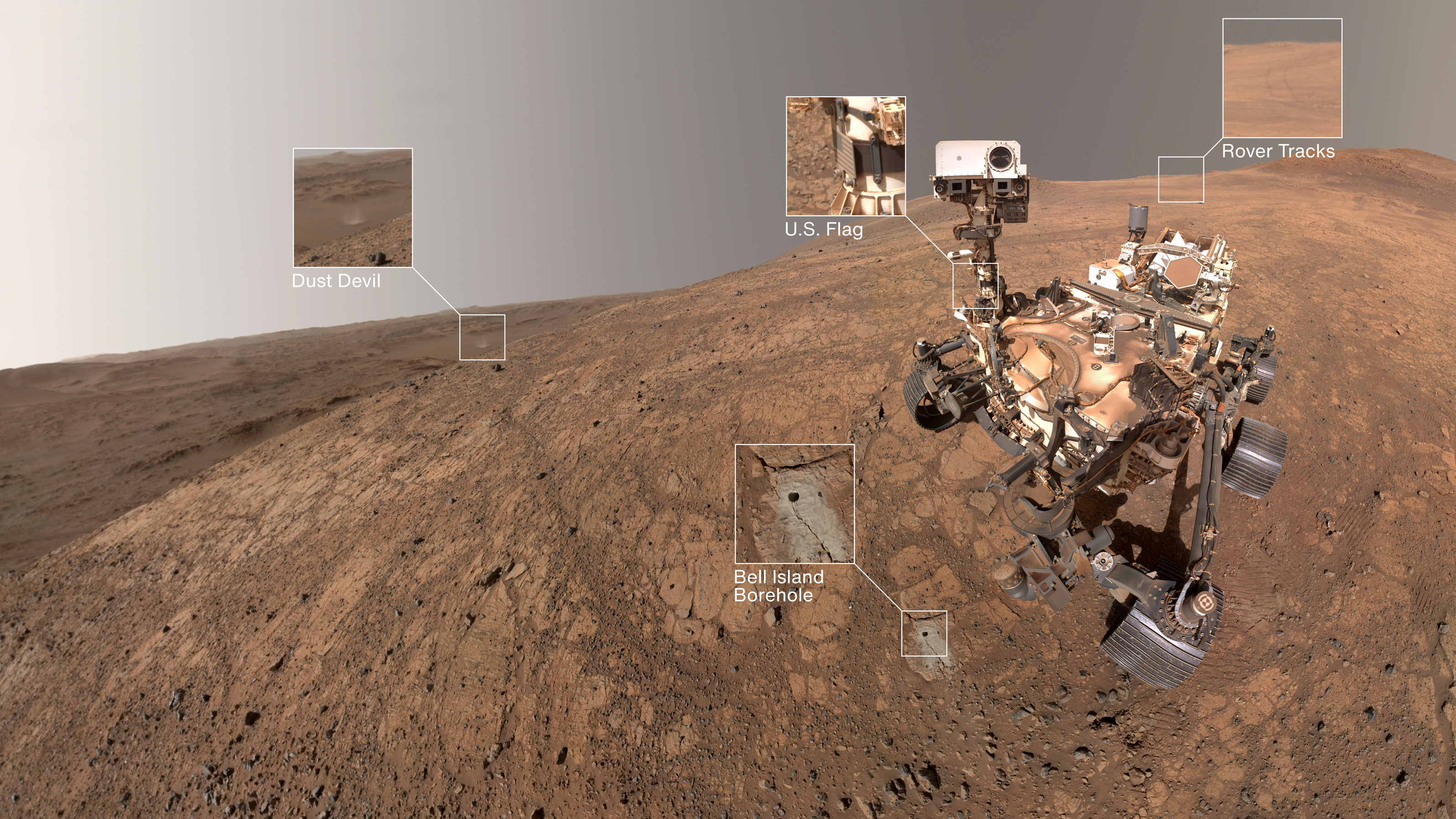Dust devil on Mars photobombs NASA Perseverance rover's selfie (photo)
"Having the dust devil in the background makes it a classic — this is a great shot."

NASA's Perseverance rover celebrated its 1,500th day on Mars with a spectacular new selfie that featured a surprise guest: a tiny dust devil.
Scientists created the Mars rover's newest self-portrait by stitching together 59 individual images taken by Perseverance's camera, which is located at the end of its robotic arm. Each shot required the arm to be precisely positioned, involving 62 carefully coordinated movements over the course of about an hour, according to a NASA statement.
"But it's worth it," Megan Wu, an imaging scientist at the Malin Space Science Systems in San Diego, said in the statement. "Having the dust devil in the background makes it a classic — this is a great shot."
Thanks to clear skies and the high angle of the sun, the photo captured that dust devil from nearly three miles (five kilometers) away. As can be seen, the devil is swirling behind a hill.
The image reveals not only Perseverance's dust-coated hardware but also the rugged terrain of Witch Hazel Hill, a region perched on the western rim of Jezero Crater where the rover has been conducting scientific investigations since December of last year. This area is of much interest to scientists seeking clues about a time when Mars had a vastly different climate than it does today.

In recent months, the rover has been reveling in a scientific bonanza, finding a diverse array of rocks at its fastest-yet pace of data collection. It also made skywatching history when it spied auroras in Mars' skies, becoming the first spacecraft to witness the curtains of light from the surface of another planet.
Since its landing in February of 2021, Perseverance has traveled more than 22 miles (36 kilometers) across the Martian surface, analyzed 37 rocks and boulders, and collected 26 rock cores. The latest portrait "gives us a great view of the terrain and the rover hardware," Justin Maki, Perseverance imaging lead at the Jet Propulsion Laboratory in California, said in the statement.
Breaking space news, the latest updates on rocket launches, skywatching events and more!
"We may be a bit dusty, but our beauty is more than skin deep," Art Thompson, Perseverance project manager at JPL, said in the statement. "Our amazing instruments continue to provide data that will feed scientific discoveries for years to come."

Sharmila Kuthunur is an independent space journalist based in Bengaluru, India. Her work has also appeared in Scientific American, Science, Astronomy and Live Science, among other publications. She holds a master's degree in journalism from Northeastern University in Boston.
You must confirm your public display name before commenting
Please logout and then login again, you will then be prompted to enter your display name.
